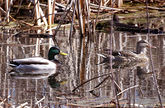Difference between revisions of "ISSS608 2017-18 T3 Assign Alejandro Llorens Moreno Conclusion"
| Line 1: | Line 1: | ||
<div style=background:#F6CECE border:#A3BFB1> | <div style=background:#F6CECE border:#A3BFB1> | ||
[[Image:Wildlife.jpg|165px]] | [[Image:Wildlife.jpg|165px]] | ||
| − | <b><font size = 6; color="#8B4513"> VAST Challenge | + | <b><font size = 6; color="#8B4513"> VAST Challenge 2018:Like a duck to water </font></b> |
</div> | </div> | ||
<!--MAIN HEADER --> | <!--MAIN HEADER --> | ||
| Line 11: | Line 11: | ||
| style="font-family:Century Gothic; font-size:100%; solid #1B338F; background:#FFF0F5; text-align:center;" width="25%" | | | style="font-family:Century Gothic; font-size:100%; solid #1B338F; background:#FFF0F5; text-align:center;" width="25%" | | ||
; | ; | ||
| − | [[ISSS608 2017-18 T3 Assign Alejandro Llorens | + | [[ISSS608 2017-18 T3 Assign Alejandro Llorens Moreno_Data_Preparation|<b><font size="2"><font color="#BC8F8F">Methodology & Dashboard Design</font></font></b>]] |
| style="font-family:Century Gothic; font-size:100%; solid #1B338F; background:#FFF0F5; text-align:center;" width="25%" | | | style="font-family:Century Gothic; font-size:100%; solid #1B338F; background:#FFF0F5; text-align:center;" width="25%" | | ||
; | ; | ||
| − | [[ISSS608 2017-18 T3 Assign Alejandro Llorens | + | [[ISSS608 2017-18 T3 Assign Alejandro Llorens Moreno_Visualization|<b><font size="2"><font color="#BC8F8F">Insights</font></font></b>]] |
| style="font-family:Century Gothic; font-size:100%; solid #1B338F; background:#FFF0F5; text-align:center;" width="25%" | | | style="font-family:Century Gothic; font-size:100%; solid #1B338F; background:#FFF0F5; text-align:center;" width="25%" | | ||
; | ; | ||
| − | [[ISSS608 2017-18 T3 Assign Alejandro Llorens Moreno_Conclusion| <b><font size=" | + | [[ISSS608 2017-18 T3 Assign Alejandro Llorens Moreno_Conclusion| <b><font size="4"><font color="#8B4513">Conclusion</font></font></b>]] |
| | | | ||
| Line 25: | Line 25: | ||
<br/> | <br/> | ||
| − | <font size="5"><font color="#8B4513">''' | + | <font size="5"><font color="#8B4513">'''Conclusion'''</font></font> |
| − | + | <b>Top 3 patterns</b> | |
| − | |||
| − | |||
| − | |||
| − | |||
| − | |||
| − | |||
| − | |||
| − | |||
| − | < | + | <br> |
| − | + | 1) We have identified several challenges in the sampling strategy. Locations and Chemicals have very different distributions which seem quite suspicious. Why taking so many samples of a specific location and few from another? This is worth investigating further. | |
| − | |||
| − | |||
| − | |||
| − | |||
| − | + | 2) Specific outliers (and extreme outliers 3 standard deviations from the average of the samples taken) are present in this dataset. We have presented a few examples worth investigating further. For example, Methylosmoline, Nitrates, Magnesium, Sulphates, Coliforms, Iron..etc.. are just a few examples of samples that represent very high values in specific months. Understanding the relationship between these variables and correlating these with the outliers presented in our Tableau analysis is important to interlink suspicious potential behaviours. | |
| − | |||
| − | |||
| − | |||
| − | |||
| − | |||
| − | + | 3) Designing a better sampling strategy is important. A strategy more systematic and focusing at specific days of the month over time. This would help determine cyclical patterns or spot true outliers in the data. Most of the chemical values have been discarded because of poor quality of data, not enough samples or abnormal distributions. | |
| − | |||
| − | |||
| − | |||
| − | |||
| − | |||
| − | |||
| − | |||
| − | |||
| − | |||
Revision as of 20:42, 8 July 2018
|
|
|
|
|
Conclusion
Top 3 patterns
1) We have identified several challenges in the sampling strategy. Locations and Chemicals have very different distributions which seem quite suspicious. Why taking so many samples of a specific location and few from another? This is worth investigating further.
2) Specific outliers (and extreme outliers 3 standard deviations from the average of the samples taken) are present in this dataset. We have presented a few examples worth investigating further. For example, Methylosmoline, Nitrates, Magnesium, Sulphates, Coliforms, Iron..etc.. are just a few examples of samples that represent very high values in specific months. Understanding the relationship between these variables and correlating these with the outliers presented in our Tableau analysis is important to interlink suspicious potential behaviours.
3) Designing a better sampling strategy is important. A strategy more systematic and focusing at specific days of the month over time. This would help determine cyclical patterns or spot true outliers in the data. Most of the chemical values have been discarded because of poor quality of data, not enough samples or abnormal distributions.
